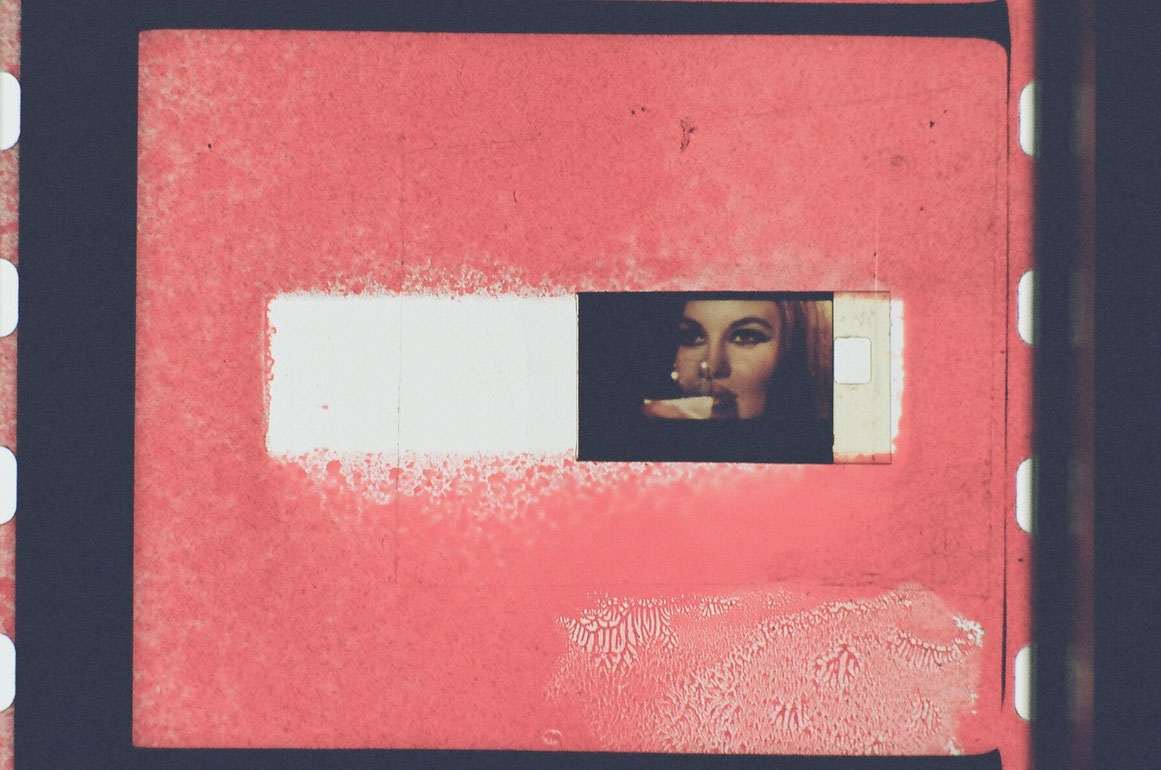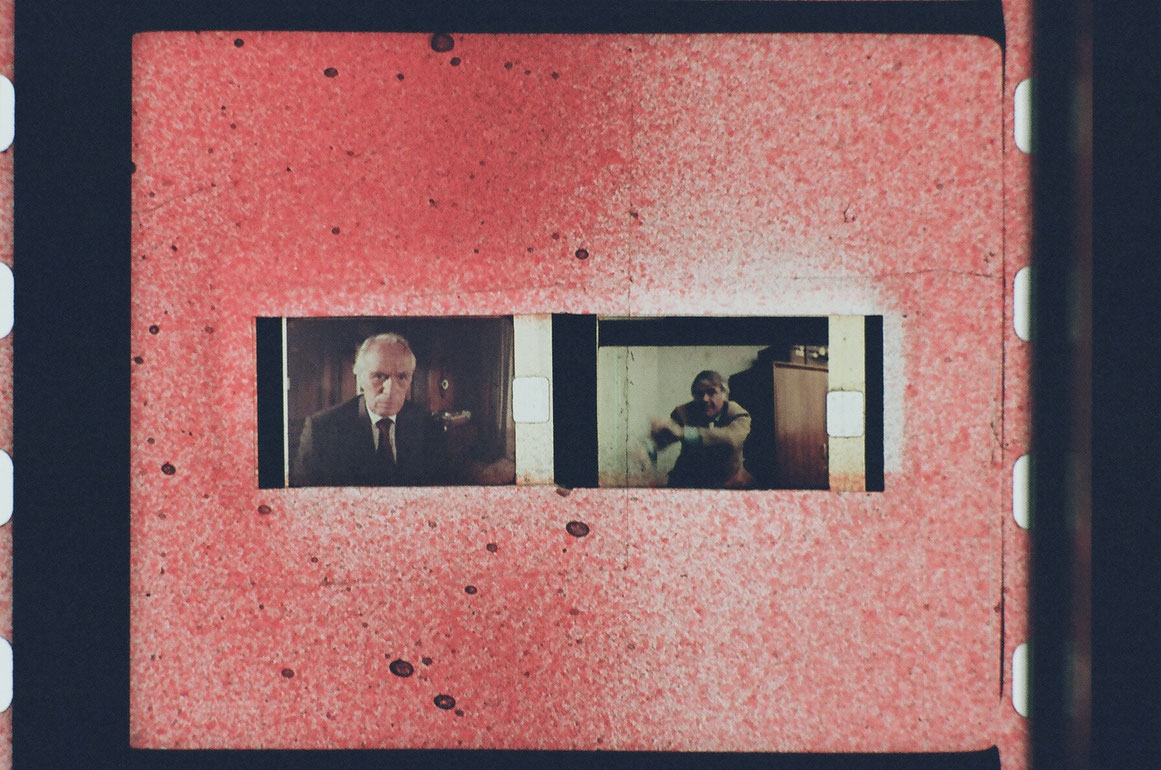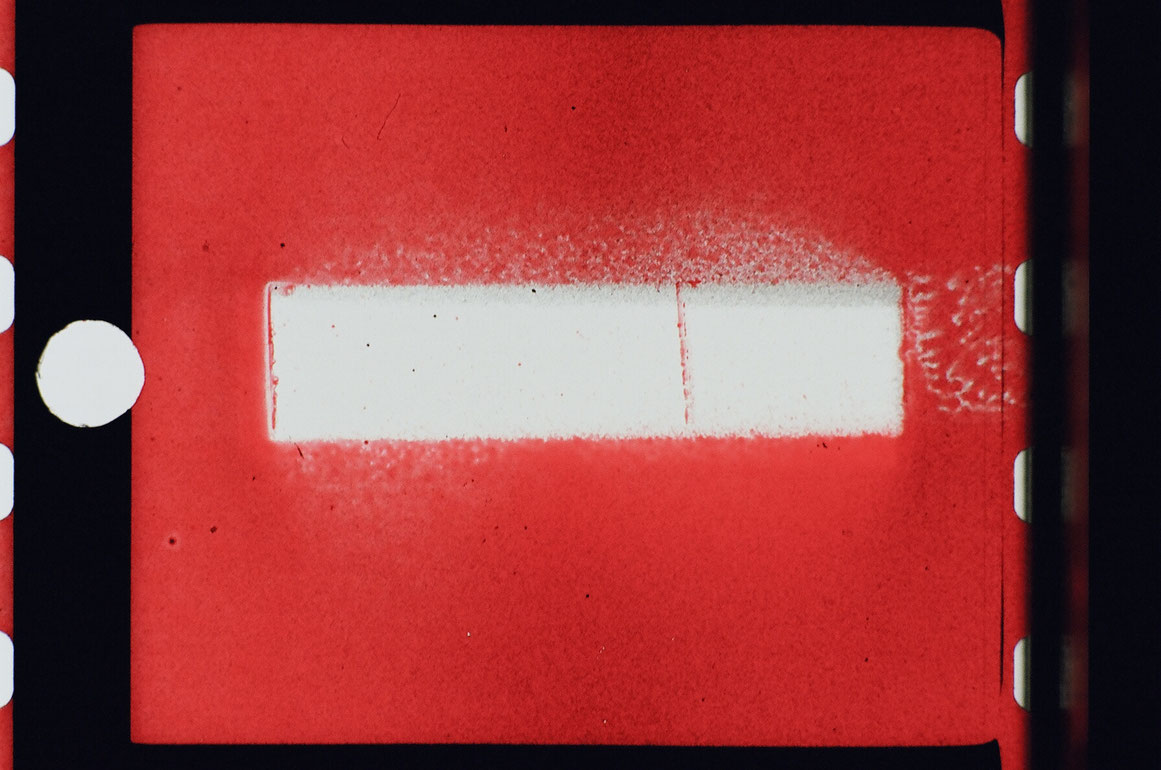Red Nitro
A color sound film made without a camera or musical instruments is how Amos Vogel described Loops by Norman McLaren, who painted sound and images onto a strip of 35mm film in 1948. In a similar way Christoph Weihrichs Red Nitro does without this technical equipment. Frames were colored red by hand, and a white observation slit in widescreen format was made with the aid of stencil. The titles and frames from a found Super-8 film were pasted inside it, and the sound was stamped onto the soundtrack in a way similar to the found footage.
All that follows a certain rhythm, a score according to which the film fragments flare up separately or in unison, accompanied by a brief clattering. Before some kind of structure can be made out, the films over. The visual subjects are equally difficult to recognize: a mans face (possibly), that of a woman, another scene, columns of numbers and then The End.
Red Nitro inscribes itself in the history of avant-garde film almost 60 years after Loops was made, in the knowledge that nothing hasnt been done yet in 110 years of film history (Weihrich). In its brief flare-up it seems like the ghost of something that lost its subversive potential a long time ago.
At the same time Red Nitro makes its own comment: The excerpt-like character is translated into the form of the double framing, which permits the juxtaposition of different filmic realities. And so the (narrative) fiction film, condensed into a few key moments, is joined with experimental films self-reflexive obsession with the material to create a visual surprise. The result is humorous and also provides a long-lasting stimulus to consider the topicality of the concept of the avant-garde.
(Claudia Slanar)
Translation: Steve Wilder
Red Nitro
2006
Austria
1 min



